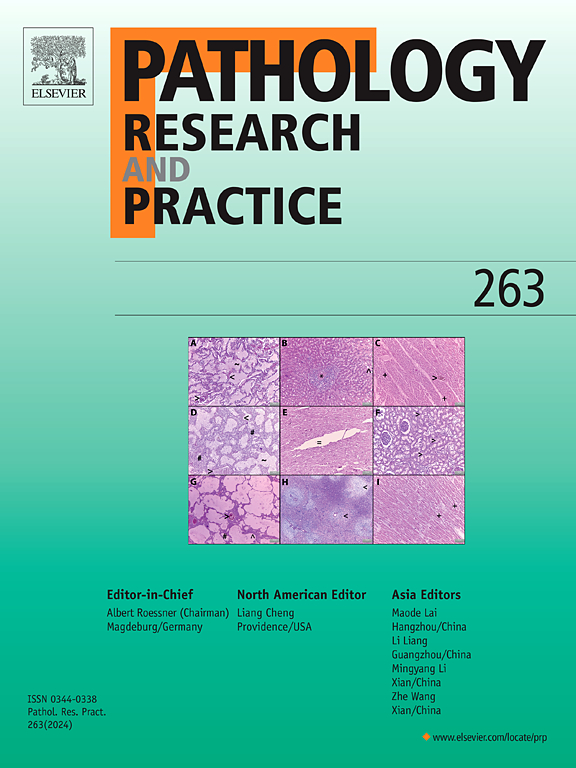肺癌中的脓毒症:非编码 RNA 的新作用
IF 2.9
4区 医学
Q2 PATHOLOGY
引用次数: 0
摘要
肺癌仍然是全球范围内难以治愈的恶性肿瘤,因此需要新的治疗方法。炎症导致的一种致命的细胞程序性死亡形式--嗜热细胞增多症(Pyroptosis)与癌症进展和治疗反应有关。同时,非编码 RNA(包括长非编码 RNA(lncRNA)、microRNA(miRNA)、环状 RNA(circRNA)和小干扰 RNA(siRNA))已被证明在协调模式形成和致癌途径中具有重要作用。最近的研究发现,ncRNA 可通过与 NLRP3、GSDMD 和各种转录因子等关键分子角色相互作用,促进或抑制脓毒症。ncRNA 的这种双重作用为操纵化脓途径提供了独特的治疗潜力,为创新癌症治疗提供了机会。在这篇综述中,我们整合了当前的研究成果,提出了利用 ncRNA 介导的热蛋白沉积作为肺癌治疗干预的新策略。我们探讨了 ncRNA 作为生物标记物预测患者对治疗反应的潜力,以及作为靶点克服传统疗法耐药性的潜力。本文章由计算机程序翻译,如有差异,请以英文原文为准。
Pyroptosis in lung cancer: The emerging role of non-coding RNAs
Lung cancer remains an intractable malignancy worldwide, prompting novel therapeutic modalities. Pyroptosis, a lethal form of programmed cell death featured by inflammation, has been involved in cancer progression and treatment response. Simultaneously, non-coding RNA has been shown to have important roles in coordinating pattern formation and oncogenic pathways, including long non-coding RNA (lncRNAs), microRNA (miRNAs), circular RNA (circRNAs), and small interfering RNA (siRNAs). Recent studies have revealed that ncRNAs can promote or inhibit pyroptosis by interacting with key molecular players such as NLRP3, GSDMD, and various transcription factors. This dual role of ncRNAs offers a unique therapeutic potential to manipulate pyroptosis pathways, providing opportunities for innovative cancer treatments. In this review, we integrate current research findings to propose novel strategies for leveraging ncRNA-mediated pyroptosis as a therapeutic intervention in lung cancer. We explore the potential of ncRNAs as biomarkers for predicting patient response to treatment and as targets for overcoming resistance to conventional therapies.
求助全文
通过发布文献求助,成功后即可免费获取论文全文。
去求助
来源期刊
CiteScore
5.00
自引率
3.60%
发文量
405
审稿时长
24 days
期刊介绍:
Pathology, Research and Practice provides accessible coverage of the most recent developments across the entire field of pathology: Reviews focus on recent progress in pathology, while Comments look at interesting current problems and at hypotheses for future developments in pathology. Original Papers present novel findings on all aspects of general, anatomic and molecular pathology. Rapid Communications inform readers on preliminary findings that may be relevant for further studies and need to be communicated quickly. Teaching Cases look at new aspects or special diagnostic problems of diseases and at case reports relevant for the pathologist''s practice.

 求助内容:
求助内容: 应助结果提醒方式:
应助结果提醒方式:


